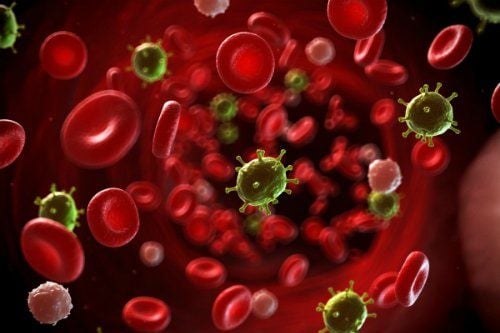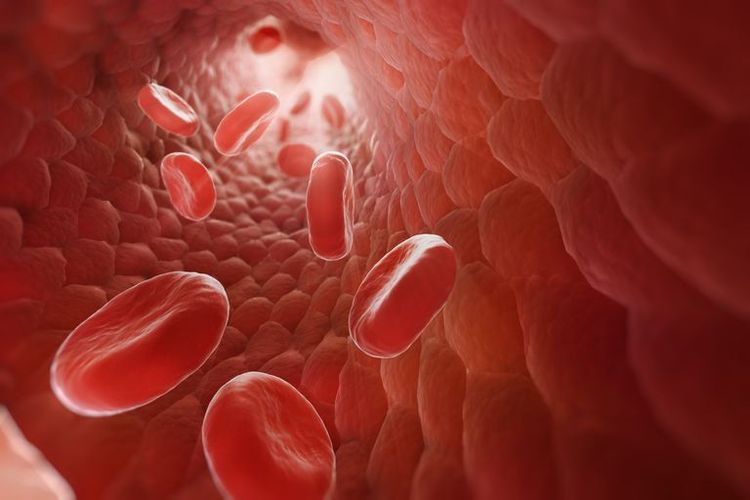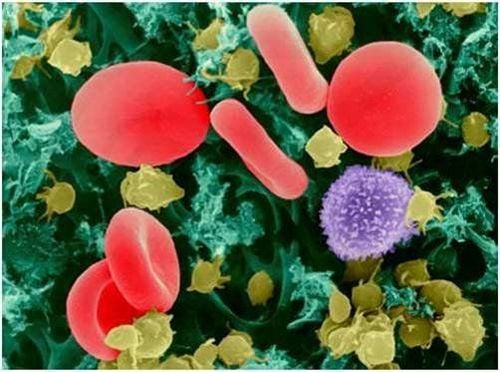Blood viscosity is determined by red blood cells and protein components in plasma. Measuring blood viscosity is highly valuable in assessing thrombotic disorders.
1. Biochemical characteristics of blood
Blood is a red, salty liquid tissue, formed along with the vascular system, and is a vital component of the body. Blood volume accounts for 1/13 of body weight. It comprises blood cells (red blood cells, white blood cells, and platelets) and extracellular fluid (plasma).
Blood circulates within veins and arteries, performing many essential physiological functions. The primary functions of blood include protection, excretion, regulation, and nutrition.
Blood plays a crucial role in respiration by transporting oxygen (O2) from the lungs to cells and tissues and carrying carbon dioxide (CO2) from cells to the lungs for excretion. Blood protects the body through white blood cells, antibodies, and buffering systems, and it helps regulate bodily functions and chemical processes by transmitting hormones. Additionally, blood maintains osmotic pressure and acid-base balance.
The physical and chemical properties of blood are characterized by its density, viscosity, and osmotic pressure. Blood viscosity is 4–6 times higher than water viscosity and depends on red blood cell count. Increased blood viscosity can impede blood flow in arteries and reduce blood supply to organs such as the heart, kidneys, and brain. Blood viscosity is associated with various diseases that involve thrombotic complications.

2. What is blood viscosity?
Blood viscosity is determined by red blood cells and protein components in plasma. The normal range of blood viscosity is 2.3–4.1 centipoise at 37°C. Viscosity increases in cases of dehydration caused by diarrhea, excessive sweating during labor, or sudden fever.
Severe dehydration not only alters blood viscosity but also leads to decreased blood pressure and imbalances in internal homeostasis, necessitating rehydration with physiological solutions.
Factors affecting blood viscosity include:
- Cellular composition: Conditions such as polycythemia, thrombocytosis, or severe leukocytosis can increase blood viscosity.
- Hemoconcentration: Increased blood viscosity often accompanies hemoconcentration.
- Red blood cell deformability: Capillaries typically have a diameter <5 μm, while red blood cells average 7–8 μm. Red blood cells must deform to pass through capillaries. Certain diseases, such as sickle cell anemia, reduce red blood cell deformability, leading to secondary increases in blood viscosity.
- Red blood cell aggregation: Proteins like fibrinogen, globulins, very-low-density lipoproteins, and circulating immune complexes can cause red blood cells to clump, forming rouleaux that impede blood flow and increase viscosity.
- Plasma viscosity: High-molecular-weight proteins increase plasma viscosity, subsequently raising blood viscosity. These proteins also promote rouleaux formation and thrombotic complications.

3. The significance of measuring blood viscosity
Many diseases associated with thrombotic complications are linked to increased blood viscosity, red blood cell aggregation, or reduced red blood cell deformability. Conditions such as diabetes, hypertension, and hyperlipidemia often exhibit these abnormalities. However, it is often challenging to determine whether these abnormalities are the cause or result of clinical thrombotic events.
Blood viscosity testing is particularly valuable for evaluating thrombotic disorders, especially in patients with diabetes, hypertension, high cholesterol, polycythemia, peripheral artery inflammation, and hypergammaglobulinemia. The test is useful for diagnosing hyperviscosity syndrome or guiding treatment decisions.
Blood performs numerous vital functions in the body. One of its key physical and chemical properties, blood viscosity, is determined by red blood cells and plasma protein components. Therefore, measuring blood viscosity is highly significant in assessing thrombotic disorders.













